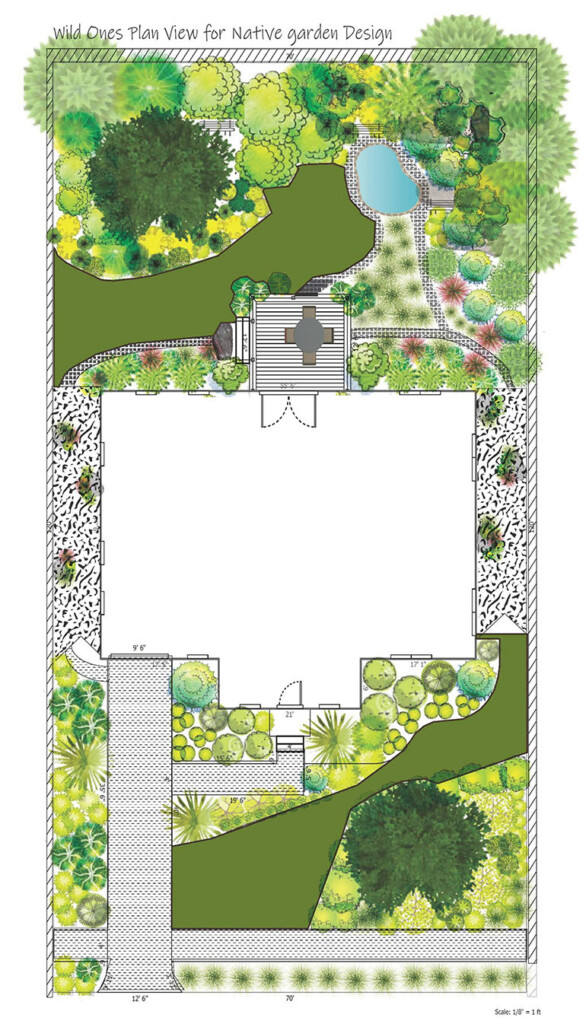
Printing note: This design was created to be 8.5″ x 14″ and the design pdf will print best on legal size paper.
Wild Ones Meet the Designers Webinar
Meet Josh Altidor and Andy Brand, the talented designers who created the Wild Ones Boston Native Garden Design!
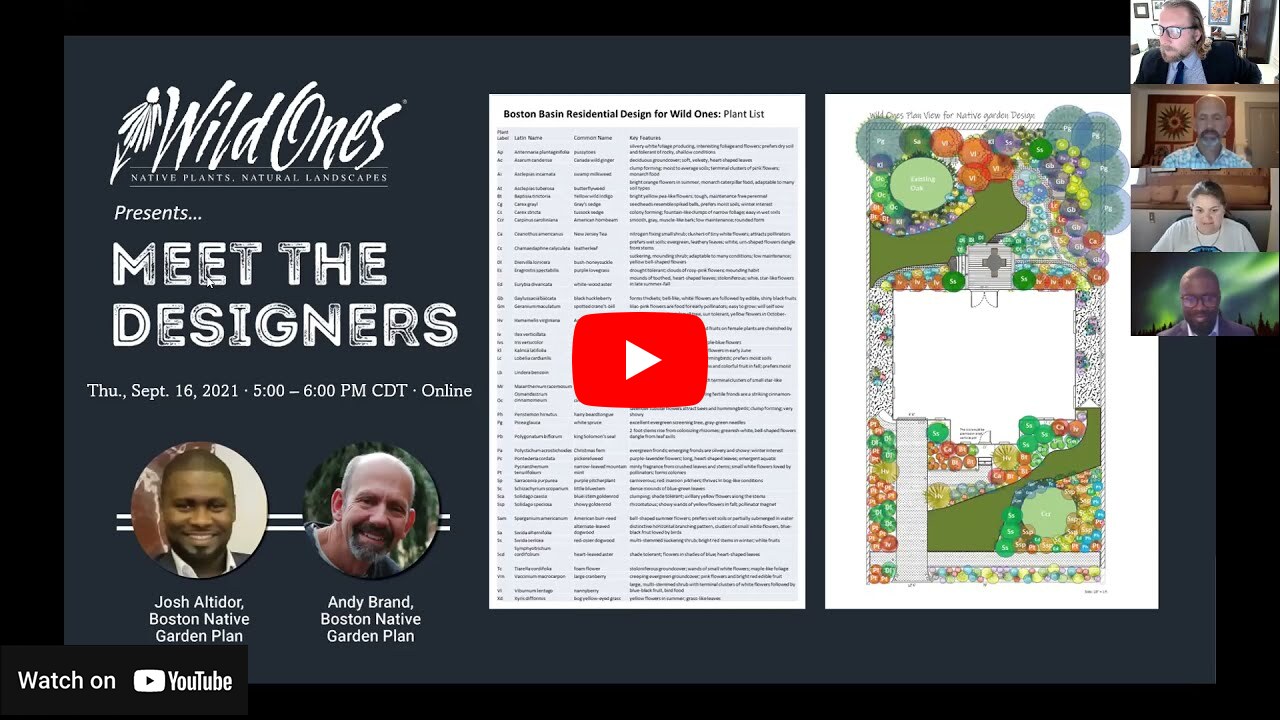
Site Analysis
Soil and Growing Conditions
The Boston Basin includes densely populated urban and suburban communities, made up of buildings and roads that absorb the sun’s heat more than natural landscapes, such as forests, rivers, and lakes. These “heat islands” where greenery is limited can have temperatures 1-7% higher than outlying areas. Urban/suburban areas are also impacted by the ways in which humans live and work on these sites. The designers took this into account when evaluating the residential plot, and took note the potential for anthropogenic influences on the site conditions. One of the first areas identified as part of the site inventory and analysis was the front driveway and the need to have a landscape that is resilient enough to handle fluctuations in temperature and carry a substantial snow load and potential salt spray.
Focusing on the backyard the designers anticipated there being some areas of the garden where water holding could be a real possibility. They imagined having a backyard where water was pooling to the northeast of the property where sunlight is sometimes a bit of a limiting factor. They embraced this challenge and were excited to share a concept that included wet to marginal soils and designed a bog to feature several of the prominent species which live in these somewhat troublesome spots in the landscape.
Plant selection also revolved around finding the right fit for the glacial soils and relatively thin layer of silty loam to sandier soils typical of the region.
When looking at the side yards, the designers wanted to provide the residence with a pleasant walkway and opted for a gravel and stone pathway to avoid the challenges of maintaining turf in these tight locations with limited functionality. To enhance the aesthetic, they added some natural boulders to the walkway, creating four seasons of interest.
Additionally, they anticipated having an opportunity to have larger sedimentary rocks on site or, if needed, brought on site to celebrate the rich geological history of the region. These rocks are scattered amongst the plantings, telling the story of the Boston Basin Ecoregion, which was defined by the juxtaposition of varying geology with more metamorphic rock on the perimeter of the basin.
The southwestern portion of the garden was shaped by the need to deal with high levels of heat and limited shade. They focused this part of the design on plants that live in more open conditions when not in the shade pattern of the home or existing tree.
The site contains several opportunities to support pollinator and wildlife activity. The designers provided ephemeral wetlands for amphibians, reptiles, birds, and insects, working with excess water in parts of the landscape. This allowed them to amplify the diversity of plantings, rather than focusing on an uphill battle of establishing turf or providing artificial drainage which could impact in the stormwater cycle. The designers also focused on choosing hardy plants that would work well given the potential for having subsoil in and around the foundation and selected plants primed to survive in somewhat leaner soils.
From various exposures to variability in soil conditions and potential for high levels of salts, the designers worked diligently to provide a resilient landscape that incorporates would represent a wide range of woody and herbaceous plant materials to suit the site.
Phasing
Phase 1
When designing the residential landscape for the Boston Basin the designers took a logical approach to what elements would provide the most impact in the shortest amount of time. They looked for functionality and the establishment of an evergreen element which could provide structure in the landscape and habitat for wildlife. This was done as a two-fold approach, the first to establish and aid in the formation of microclimates but also to provide elements of habitat for wildlife rather than just an ephemeral spot for feeding. With this in mind, they felt that bringing in the stones (if desired) would help provide boundary and definition and that bringing in the larger trees and shrubs like the white spruce (Picea glauca), alternate-leaved dogwood (Swida alternifolia), and nannyberry (Viburnum lentago) would help delineate the backdrop for the garden.
Foundational plantings and the establishment of the back garden (without the bog garden, and sedge lawn) provide instant impact as part of the first phase. This would not only provide seasonal interest throughout the year but provide a succession of blooms and textures that would add to the aesthetics of the garden.
Phase 2
After completing the foundation plantings and providing the structure needed to have a beautiful and bountiful display of native plants, the next focus would be expanding the front beds to extend the garden towards the street. In this phase, much of the eastern portion of the lot would become populated with a diverse mix of herbaceous and woody plant materials furthering the bounty of plants to support and attract a growing wildlife population.
It would be recommended to start with smaller, landscape-ready plugs for filling in the gaps between smaller plant material in order to maximize your budget and get as much coverage as possible in each of the garden expansions. This helps outcompete weed pressure. While the plugs may be small to start out with, they will readily adapt to the soil conditions on the new site during their establishment. You’ll notice that the designers have added several woodland plants in this design. These plants take a bit of time to fully reach their potential height and spread, so it is important to be patient as these plants grow and fill in overtime.
Phase 3
After having established the backdrop and the majority of the garden beds, it is time to handle some of the more challenging aspects of this design: the bog, lawn replacement, and curbside planting. The mix of plants selected for the curbside planting are known for their tenacity and mirror-established beds at the parking lots of the Coastal Maine Botanical Garden. Andy was very excited to provide an example of a tapestry of color, texture, and sources of pollen. This design requires that you remove any existing lawn and weeds, then plant the combination of spring, summer, and fall forbs. These plants will require a little more assistance getting established, but will thrive in communities with low organic inputs and lean shallow soils, perfect for the typical curbside.
Next, we move into the backyard for the final two gardens to be established: the bog and the sedge lawn. Each of these gardens will require a bit more expertise and are optional elements of the design. However, they will help attract long-term wildlife especially amphibians and reptiles seeking refuge in an urban/suburban environment. Prior to establishing the bog garden, you could use herbaceous plant material, such as irises, to help with the alternating soil moisture conditions in that part of the yard, then dig them up and divide them as you establish a more intensive bog community.
The sedge lawn provides an opportunity to have an alternative lawn and will reduce the need for mowing. It should be sized appropriately over time to add a solid green foreground in an area where turf might not necessarily be needed from a functional standpoint. Over time, the homeowner would be encouraged to interplant within the lawn once established or if it suits their design intent.
Plant List
This list is inclusive of only the native plants in this specific native garden design. The list is meant to provide a basic preview of the beautiful and diverse plants featured in this design and serve as a reference tool when selecting plants at a nursery. (The list can be printed in two columns using landscape mode in your print settings.) More thorough information about each of these native plants can be found online at the Audubon, Lady Bird Johnson Wildflower Center and United States Department of Agriculture websites, all of which provide a wealth of native plant information including comprehensive North American native plant databases.
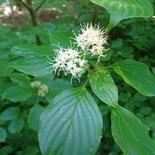
Alternate Leave Dogwood(Cornus alternifolia)
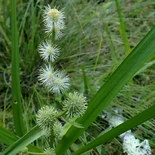
American Burr-Reed(Sparganium americanum)

American Hornbeam(Carpinus caroliniana)

Black Huckleberry(Gaylussacia baccata)
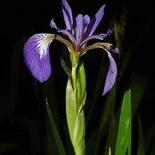
Blue Flag Iris(Iris versicolor)

Blue-Stemmed Goldenrod(Solidago caesia)

Bog Yellow-Eyed Grass(Xyris difformis)
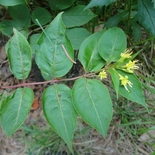
Bush Honeysuckle(Diervilla lonicera)
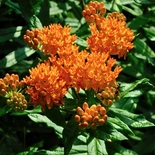
Butterfly Weed(Asclepias tuberosa)

Canada Wild Ginger(Asarum canadense)
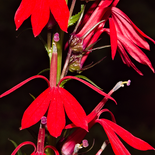
Cardinal Flower(Lobelia cardinalis)

Christmas Fern(Polystichum acrostichoides)

Cinnamon Fern(Osmunda cinnamomea)
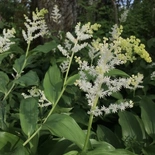
Feathery False Solomon's Seal(Maianthemum racemosum)

Foam Flower(Tiarella cordifolia)
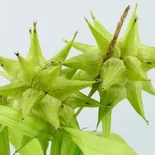
Gray's Sedge(Carex grayi)
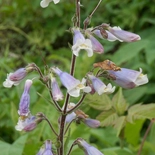
Hairy Beardtongue(Penstemon hirsutus)
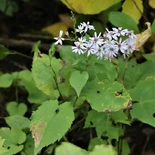
Heart-leaved Aster(Symphyotrichum cordifolium)

Large Cranberry(Vaccinium macrocarpon)
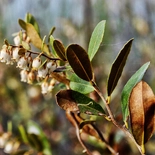
Leatherleaf(Chamaedaphne calyculata)
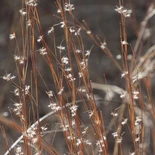
Little Bluestem Grass(Schizachyrium scoparium)

Mountain Laurel(Kalmia latifolia)

Nannyberry(Viburnum lentago)

Narrow-Leaved Mountain Mint(Pycnanthemum tenuifolium)
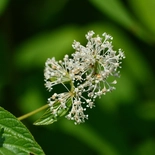
New Jersey Tea(Ceanothus americanus)
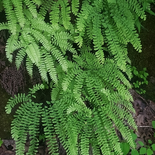
Northern Maidenhair Fern(Adiantum pedatum)

Pickeral Weed(Pontederia cordata)
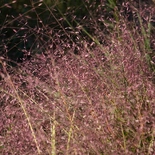
Purple Lovegrass(Eragrostis spectabilis)

Purple Pitcherplant(Sarracenia purpurea)
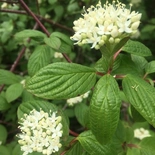
Red Osier Dogwood(Cornus sericea)
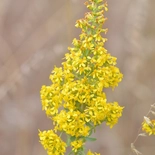
Showy Goldenrod(Solidago speciosa)
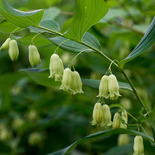
Solomon's Seal(Polygonatum biflorum)
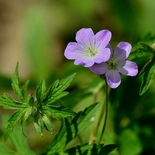
Spotted Crane's-Bill(Geranium maculatum)
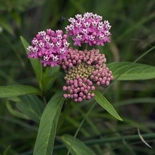
Swamp Milkweed(Asclepias incarnata)
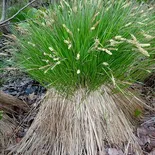
Tussock Sedge(Carex stricta)
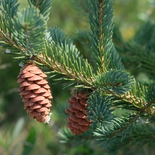
White Spruce(Picea glauca)
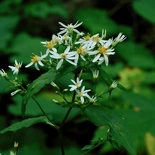
White Wood Aster(Eurybia divaricata)

Winterberry(Ilex verticillata)

Witch Hazel(Hamamelis virginiana)
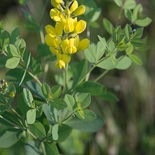
Yellow Wild Indigo(Baptisia sphaerocarpa)
About the Designers
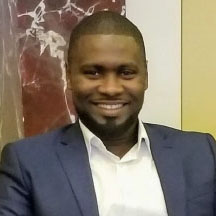
Josh Altidor was born and raised in Haiti. He currently serves as the General Superintendent of Parks Maintenance and Turf Management for the City of Boston. In 2013, Josh became the first Haitian immigrant to design and plant in the oldest Botanical Garden in America, The Boston Public Garden. He is known for his bold approach and tells his story through his vibrant design. In 2018, Josh became the first Haitian American Director of Maintenance for Boston Parks and Recreation department. Josh focused on creating a sustainable and an inclusive urban parks system that works for every Bostonian regardless of their zip code.
Josh has a Bachelor of Science Degree in Agroforestry and Environmental Sciences from the American University of the Caribbean as well as a Masters of Design degree in Sustainable Urban Environments from Northeastern University. He also has a Leadership Management Certificate from Harvard University School of Extension. In his spare time, he enjoys participating in speaking engagements, landscape design, and cooking. Josh speaks four languages and is hoping to add more to his repertoire.

Andy Brand was born and raised in Connecticut. He graduated from the University of CT with BS and MS degrees in Environmental Horticulture and Plant Science respectively. For 27 years Andy was employed at Broken Arrow Nursery in Hamden where he was the nursery manager. In March, 2018 Andy joined the staff at the Coastal Maine Botanical Garden as Curator of Living Collections. His responsibilities include plant selection and introducing new plants to the Garden’s collection and maintaining plant records and labels. Currently, he is Interim Director of Horticulture at the Gardens.
He is past President of the Connecticut Nursery and Landscape Association and is an avid naturalist. He is a cofounder and past President of the Connecticut Butterfly Association. He has spoken to groups throughout the northeast on a range of topics including native plants, new and unusual ornamentals, butterfly gardening, butterflies and their life histories, and increasing biodiversity in landscapes. Andy, along with his wife, Michelle lives in Bristol, Maine. Andy also has a Facebook page, Seeing Nature: Observations from New England, a page dedicated to native flora and fauna.
Free National Webinar: "Intergenerational Care for Land and Community: A Conversation with Robin Wall Kimmerer and Esther Bonney"
January 21st at 6:00 PM (CT)
In this special collaboration, Robin Wall Kimmerer, author, botanist, and founder of Plant Baby Plant, joins youth leader and Nurture Natives founder Esther Bonney for an intergenerational conversation about belonging, reciprocity, and native plant action.
About Wild Ones
Wild Ones (a 501(c)(3) nonprofit organization) is a knowledgeable, hands-on, and supportive community focused on native plants and the ecosystem that depends on them. We provide resources and online learning opportunities with respected experts like Wild Ones Honorary Directors Doug Tallamy, Neil Diboll, and Larry Weaner, publishing an award-winning journal, and awarding Lorrie Otto Seeds for Education Program grants to engage youth in caring for native gardens.
Wild Ones depends on membership dues, donations and gifts from individuals like you to carry out our mission of connecting people and native plants for a healthy planet.
Looking for more native gardening inspiration? Take a peek at what our members are growing!

